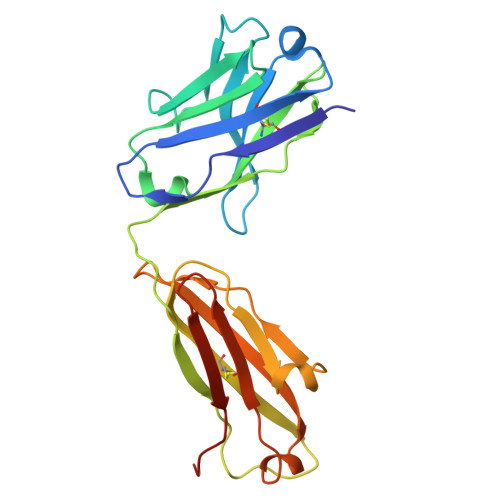Structural insights into ternary immunocomplex formation and cross-reactivity: binding of an anti-immunocomplex FabB12 to Fab220-testosterone complex.
Eronen, V., Takkinen, K., Torni, A., Peng, K., Janis, J., Parkkinen, T., Hakulinen, N., Rouvinen, J.(2024) FEBS J
- PubMed: 39206623
- DOI: https://doi.org/10.1111/febs.17258
- Primary Citation of Related Structures:
8RTW, 8RTX - PubMed Abstract:
Anti-immunocomplex (Anti-IC) antibodies have been used in developing noncompetitive immunoassays for detecting small molecule analytics (haptens). These antibodies bind specifically to the primary antibody in complex with hapten. Although several anti-IC antibody-based immunoassays have been developed, structural studies of these systems are very limited. In this study, we determined the crystal structures of anti-testosterone Fab220 in complex with testosterone and the corresponding anti-IC antibody FabB12. The structure of the ternary complex of testosterone, Fab220, and FabB12 was predicted using LightDock and AlphaFold. The ternary complex has a large (~ 1100 Å 2 ) interface between antibodies. The A-ring of the testosterone bound by Fab220 also participates in the binding of the anti-IC antibody. The structural analysis was complemented by native mass spectrometry. The affinities for testosterone (TES) and three cross-reactive steroids [dihydrotestosterone (DHT), androstenedione (A4), and dehydroepiandrosterone sulfate (DHEA-S)] were measured, and ternary complex formation was studied. The results clearly show the ternary complex formation in the solution. Although DHT showed significant cross-reactivity, A4 and DHEA-S exhibited minor cross-reactivity.
Organizational Affiliation:
Department of Chemistry, University of Eastern Finland, Joensuu, Finland.















